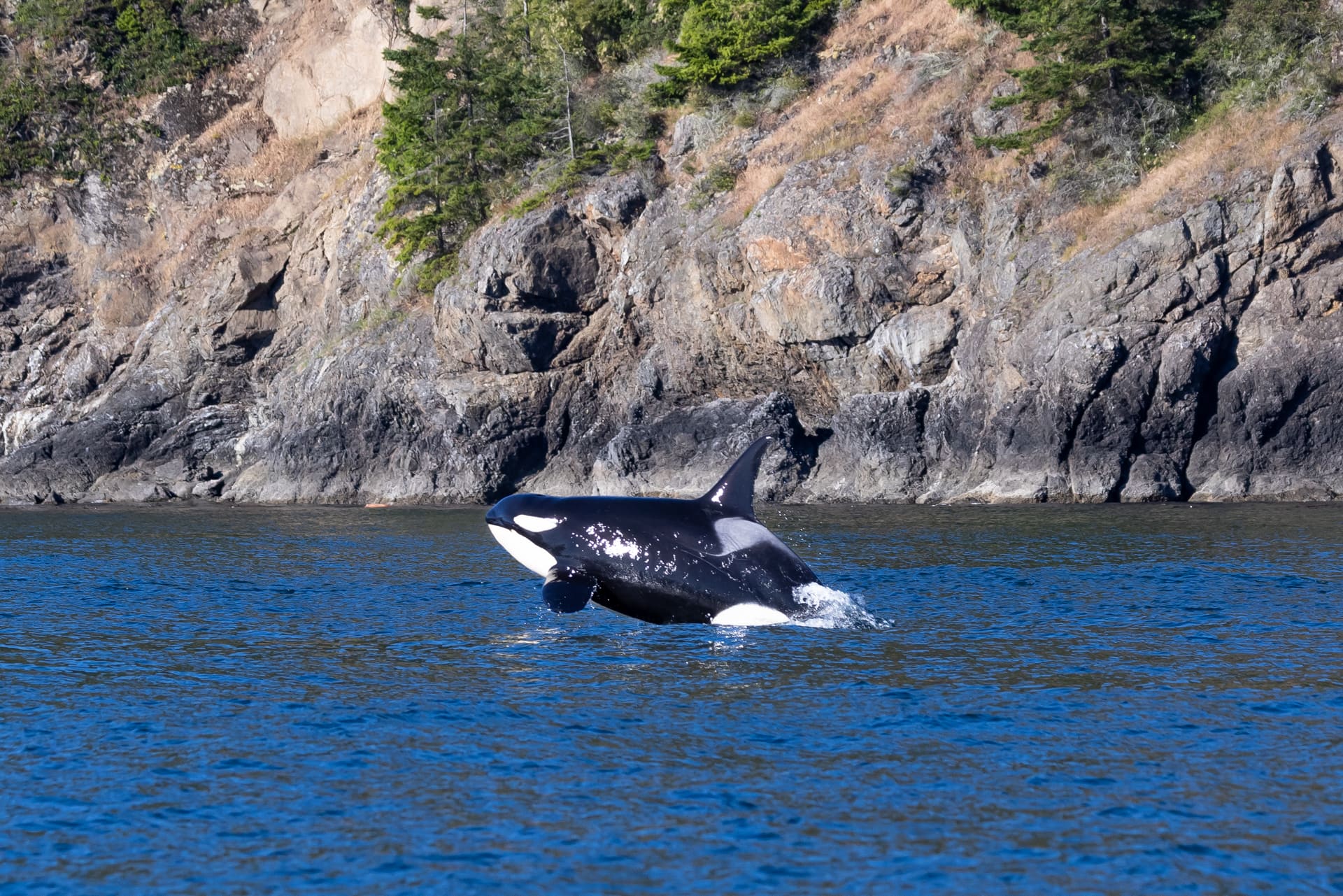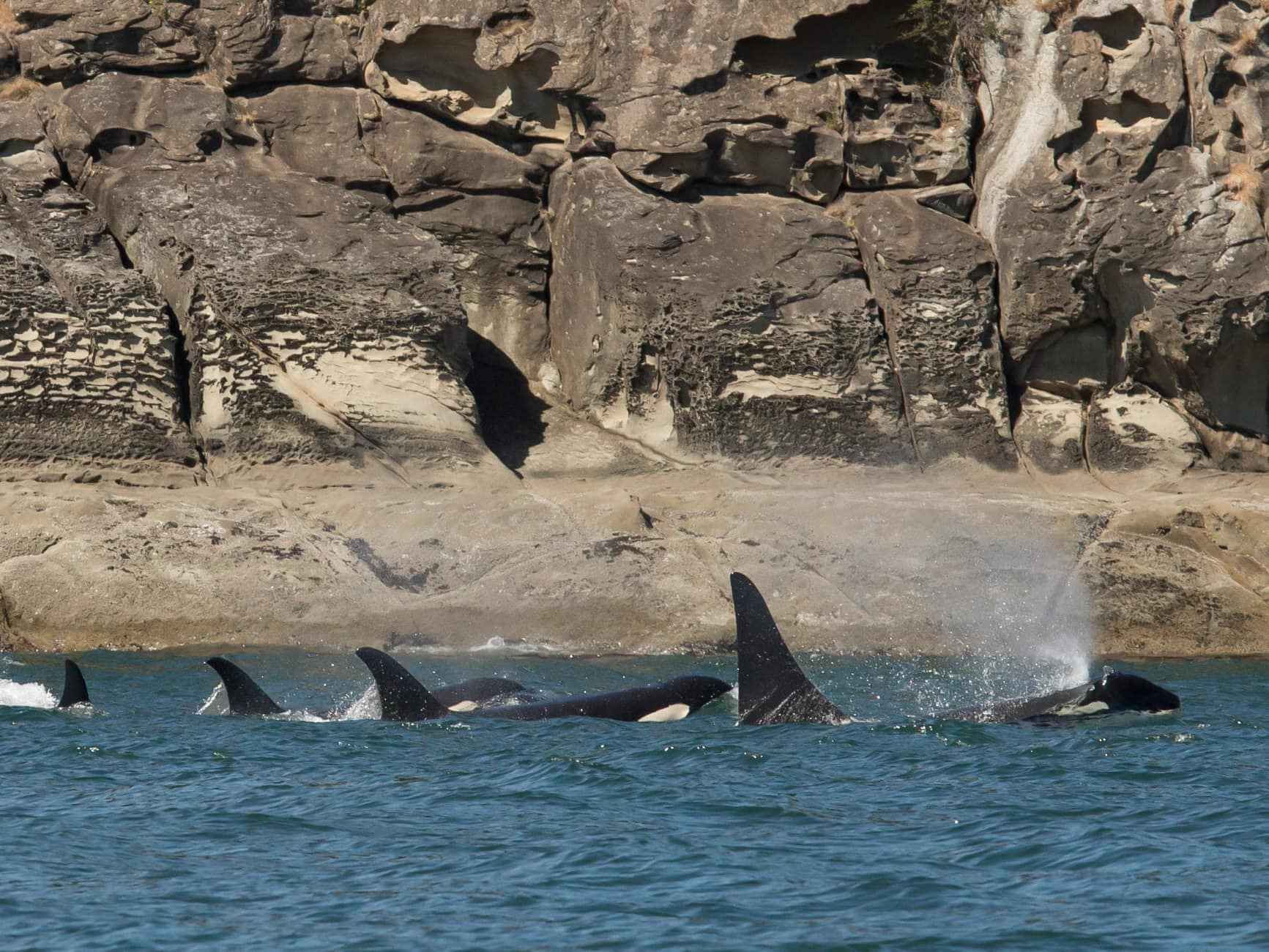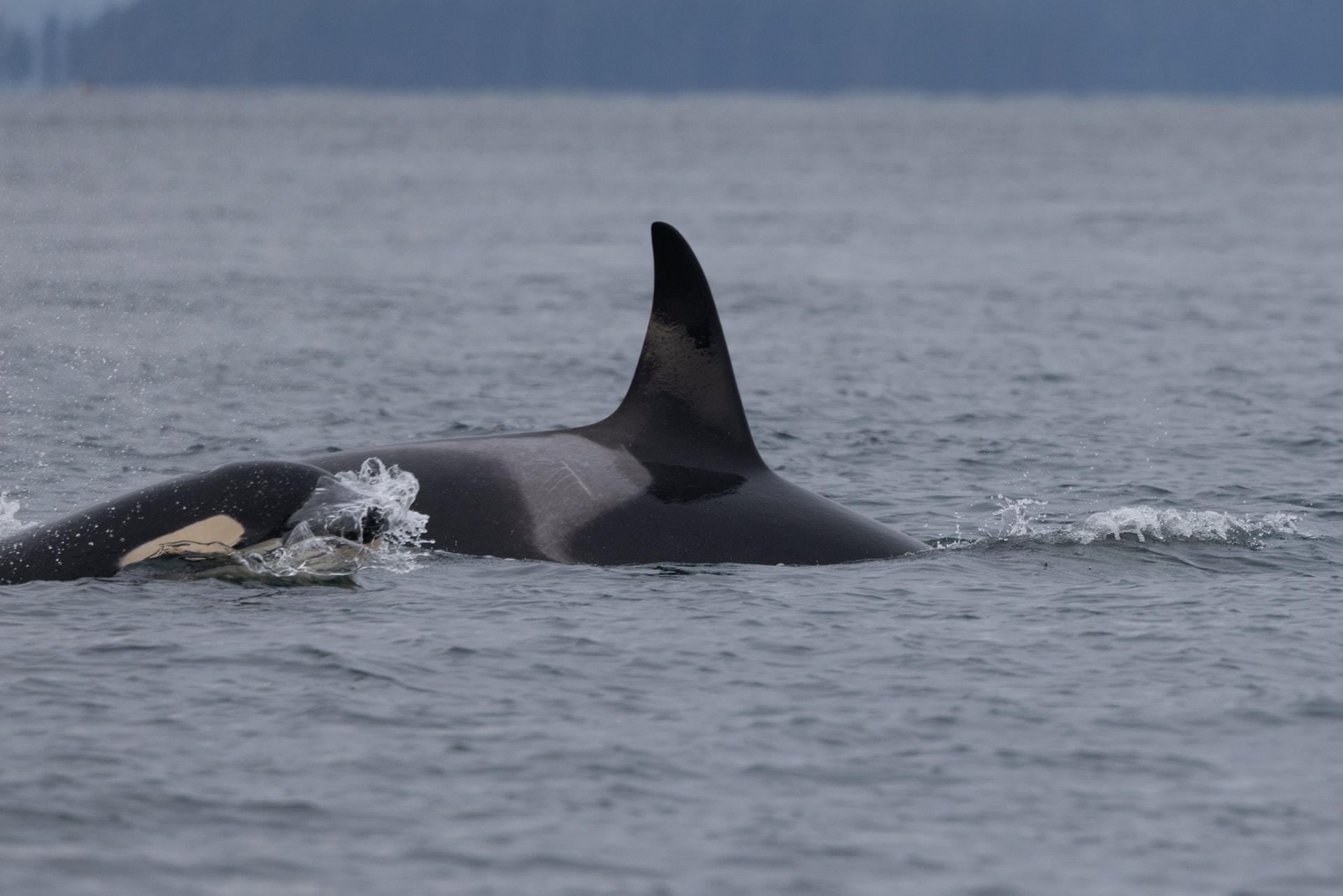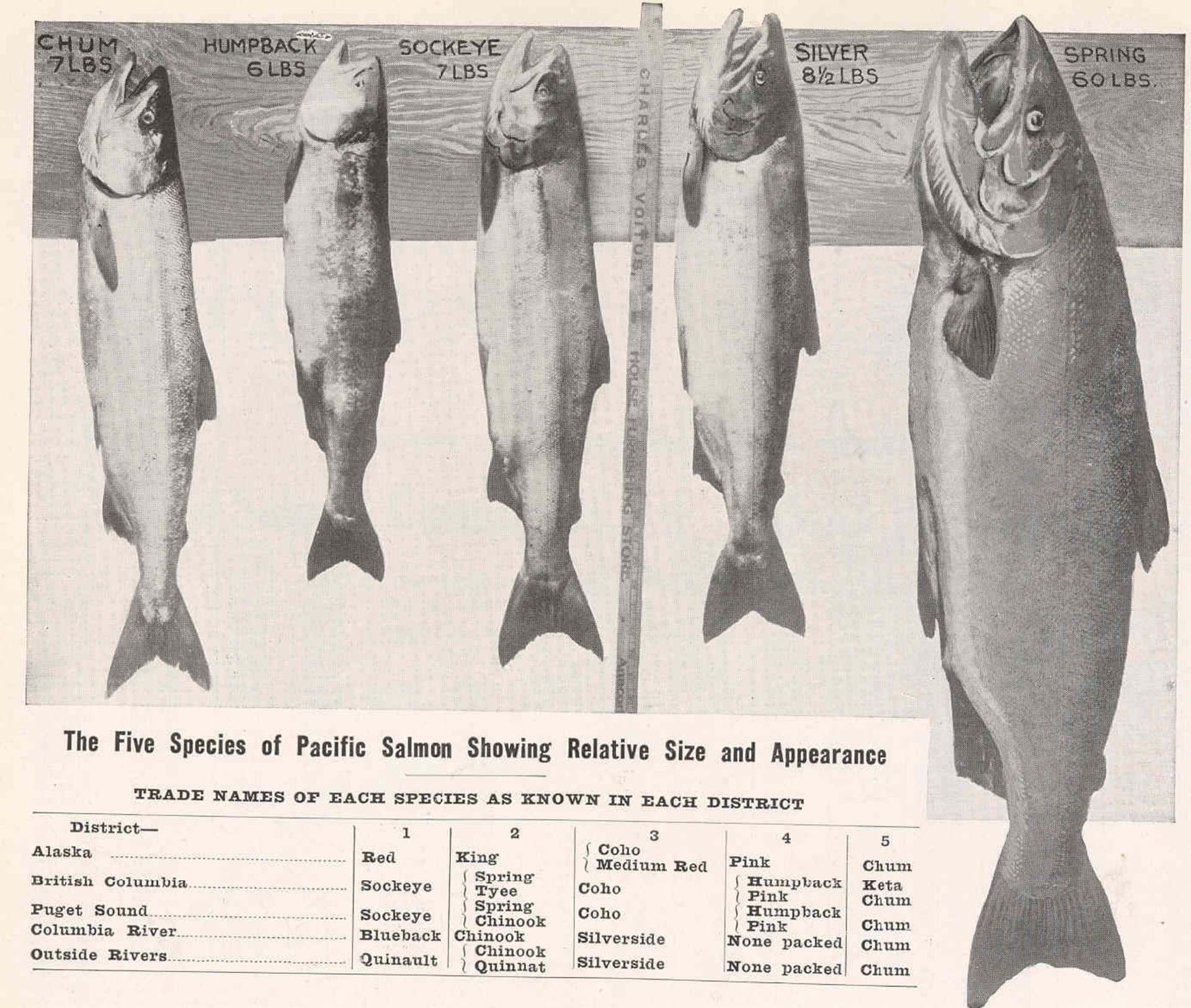
Chinook salmon are the most energy-rich of the Pacific salmon; little wonder that the Southern Resident killer whales prize them. But as a recent study found, not all Chinook salmon are created equal. Their fat content varies: the more arduous the journey home, the higher it will be. The fattiest salmon populations these endangered whales rely on are also the scarcest, putting the whales’ energy budget in the red.
Researchers at the University of British Columbia proposed to test whether fat content variability in Fraser River Chinook salmon could be a factor in the declining health of the Southern Resident killer whales. These salmon must pass through the Salish Sea on their way home to spawn in their natal rivers—taking them through the heart of the whales’ spring and summer feeding grounds.
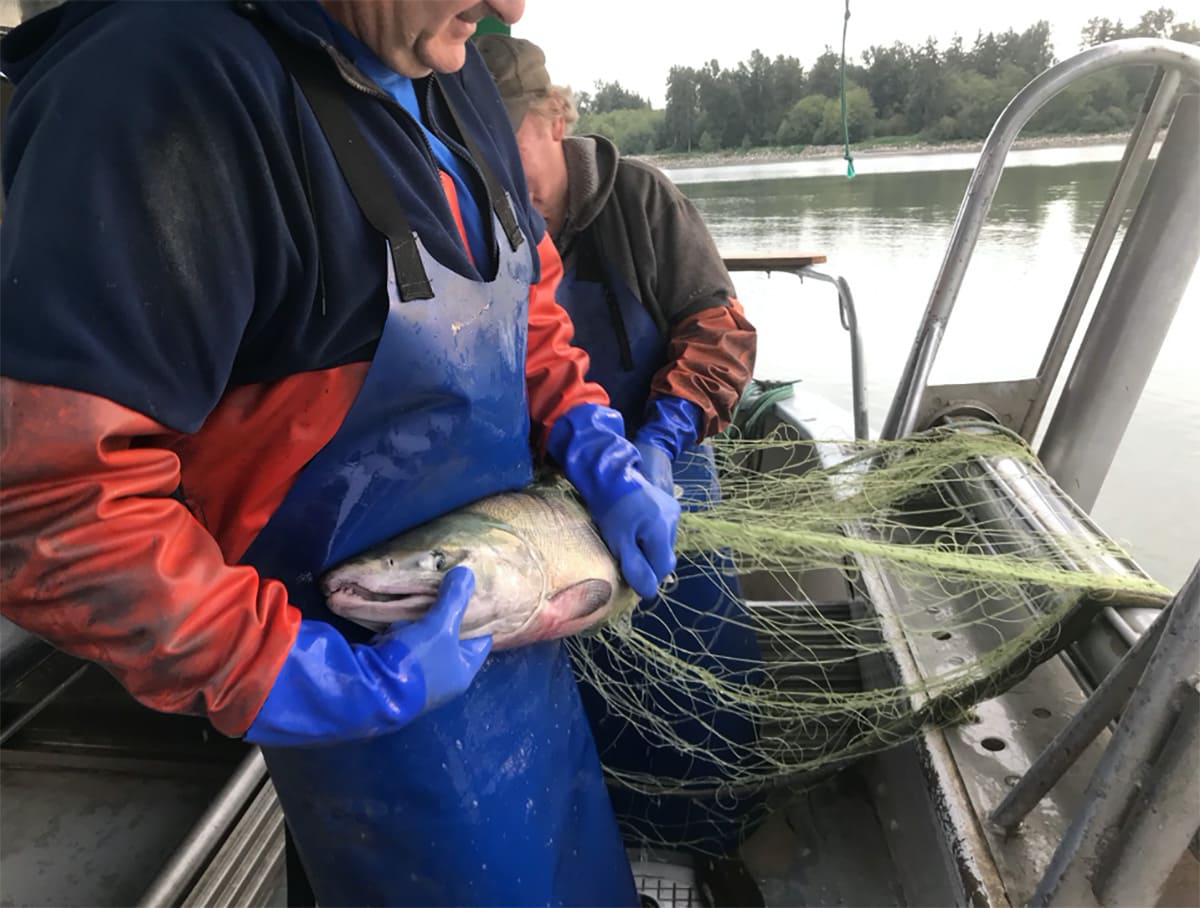
“Salmon being brought on board and removed from the net, to be measured later.”
How did they test the fish?
Every year Canadian government fishery managers sample Chinook salmon to understand their population health better. The Albion test fishery “intercepts Chinook salmon from all major Fraser River populations.” In 2020, 1,566 fish caught here were measured and weighed, with their fat content assessed by a fat meter. The large sample size ensured the inclusion of all major Fraser River Chinook salmon populations, evidenced by their DNA.
What did they find?
Chinook salmon that migrate the furthest and must climb to the highest elevations to spawn arrive with the highest fat levels. These energy-rich populations are also the first to return to the Fraser River each spring. Researchers noted, “Historically, the Southern Resident killer whales have tended to arrive in the Salish Sea in May/June to prey on the most lipid-rich Spring and Summer Chinook.”
However, they’ve been increasingly absent in recent years, hunting offshore for alternate sources as these Chinook salmon populations have “generally been in decline since the early 2000s, potentially depriving the Southern Resident killer whales of a critical energy source.”
In fact, these Spring Chinook salmon represent the Fraser River’s most endangered salmon populations, and of concern is that researchers proposed that this may also be true of other long-distance migrators, such as Columbia River Spring Chinook salmon, another vital source for the Southern Resident killer whales.
The authors suggested that “the whales may be better served waiting to arrive in the Salish Sea until the larger and intermediate lipid-rich Summer run arrives in July.” However, as fat content decreases with each successive Chinook salmon run as the season progresses, they noted that “any delay in Southern Resident killer whales’ arrival comes at the cost of missing higher value Fraser Chinook salmon prey.”
Over the course of the season, the decline in Chinook salmon fat content leaves the whales’ energy budget in the red, “requiring up to 30% more fish to meet energy demands in the fall than in the spring.” Using a model that assumes an average Chinook salmon weighs 18 pounds, the Southern Resident killer whales would need 245,000 Spring Chinook salmon. However, without this source, they would need 325,000 Fall Chinook salmon, “a difference of 80,000 salmon.”
Fraser River Fall Chinook salmon had the lowest fat content but the largest body size, which may somewhat compensate. However, hatchery-raised Chinook salmon also return in the fall and vastly outnumber wild populations. They are also smaller than their wild counterparts, with a lower fat content, making less calorie-rich meals. Research shows that skinnier whales are more likely to die, pregnancies fail, and the effects of pollution and noise are exacerbated by nutritional stress.
Continued below...
One conservation management solution proposed by this study is a “targeted rehabilitation of potentially more energy-rich wild populations in locations with high hatchery influence.” Other measures include fishing restrictions. Yet as the authors noted, “Fisheries and Oceans Canada has implemented such a fisheries closure to protect Spring and Summer stocks since 2019, but this strategy does not extend to the United States, where these stocks are likely to be encountered.”
One final caution from this study for government fishery managers to consider is the ongoing effect of climate change, especially on Summer Chinook salmon. These populations migrate long distances when temperatures in rivers are high and water levels in rivers are often dangerously low.
“For the Southern Resident killer whales, climate-driven decreases in average prey energy density could lead to energy stress and increased foraging effort.”
In other words, if the most energy-rich Chinook salmon populations are already endangered, and the second best are most vulnerable to climate change, the future for both predator and prey looks exceptionally bleak.



